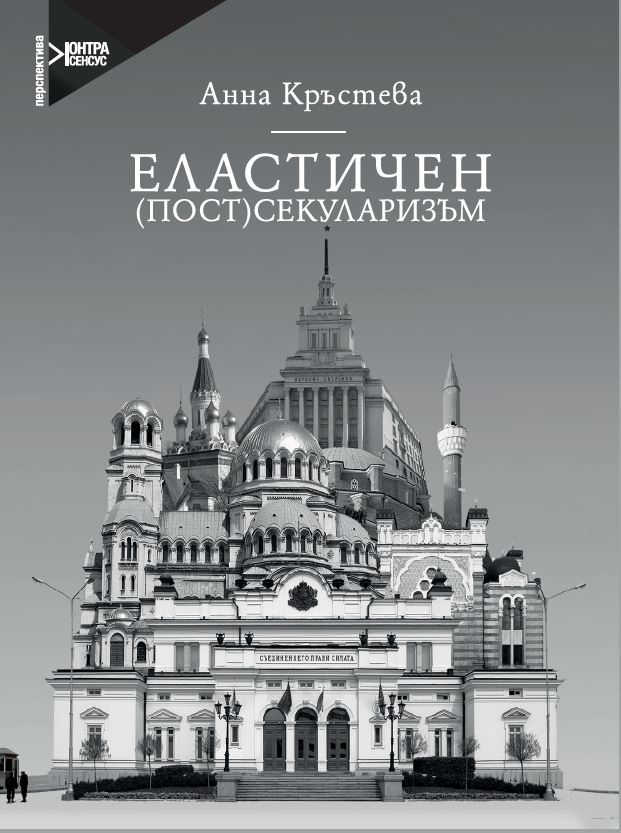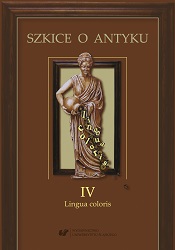
Триодни произведения на Константин Преславски (= Кирило-Методиевски студии. Кн. 2)
This book is about one of the outstadning works of Old Bulgarian religious poetry, a newly discovered cycle of Triodion hymns by Constantine of Preslav. The main body of these hymns (Lenten hymns in three- and fourparts) were written in acrostics. The Old Bulgarian text is in verse and is of considerable length. It is formed by the initial letters of the troparia which compose it, and the first of these letters spell out the author's name — Constantine. The question of the Triodion and its Old Bulgarian translation is thoroughly studied. Brief historical data are given about the individual hymns included in the Triodion and their authors. Special attention is paid to the Triodion hymns of the Byzantine authors Theodore Studites, Joseph the Hymnologist and Clement Studites. The historical review of the Byzantine hymns and their authors is based on the research work of the Russian liturgist, I. Karabinov.The results of studies of the Old Bulgarian translation of the Triodion are followed by a review of the different interpretations of the information given in Theophilactus's Life of Clement of Ochrid, concerning the latter's part in the translation of the Triodion. All attempts made so far to review the work of characterizing and classifying manuscript Slavonic Triodia are considered. Questions concerning the Old Bulgarian translation of the Triodion are studied in the light of the most recent discoveries, and, above all, in the light of the newly discovered original Old Bulgarian part. In resolving the question of authorship, the first thing to be taken into consideration is the content of a troparion in the cycle in which mention is made of the 'driving out' by the trilinguists of the Lord's servants 'who wander over the land.' The contents of the troparion lead directly to the events which set in after the death of Methodius, enlightener of the Slavs (885), when the enemies of church services in Slavonic, the Latin-speaking clergy, drove the disciples of Cyril and Methodius out of Moravia. The same events in almost the same words are spoken of in Methodius's service. At two places in its canon mention is made of 'a flock driven out by heretics', and 'a flock wandering in strange lands'. It is known that Constantine of Preslav, the Old Bulgarian scholar, who left his name in the acrostic of the canon, was the author of the canon in Methodius's service. A comparison of this acrostic with the one in the Triodion cycle in which Constantine's name is also to be found and the similarities noted between Methodius's service and the troparion in the Triodion, leads to the conclusion that the author of the original Old Bulgarian part of the text of the Triodion was Constantine of Preslav, the Old Bulgarian scholar.The recently discovered Old Bulgarian Triodion cycle has led to important methodological conclusions concerning the composition and content of the first Bulgarian hymnals. It was thought so far that they were almost entirely translations. The Triodion hymns of Constantine of Preslav show that, while translating, the Old Bulgarian scholars created works of their own which found a place in the newly translated liturgical books together with the works of the Byzantine religious poets. Works of this kind, also written in acrostics, have been found in the manuscript menaia which have come down to us. A cycle of hymns on The Nativity and The Epiphany are of special interest in this respect, since Clement of Ochrid and Constantine of Preslav both took part in creating them. This cycle appeared at the same time as the original Old Bulgarian part of the text of the Triodion in the period immediately after the death of Methodius, when the disciples of Cyril and Methodius were staying together in the Bulgarian capital of Pliska (886). Brief data are given about the recently discovered cycle of hymns on The Nativity and The Epiphany, and a study is made of the most important conclusions to be drawn about the appearance of the Old Bulgarian translation of the Triodion.The newly discovered acrostic canons of Constantine of Preslav are textologically studied on the basis of the preserved parts of the old Slavonic Triodia which have come down to us. The acrostic canons are described, together with the remaining translations of Lenten three- and four-part hymns. A sup- plement, consisting of lists and comparative tables has been added to the description.Conclusions on the development of Lenten three- and four-part hymns, forming part of the Triodion, are studied. The Greek manuscripts, which have come down to us, show that four cycles of three-part hymns were initially included in the Triodion for the week-days of Lent. They were written by Theodore Studites, Joseph the Hymnologist, author of two cycles, one of which is an acrostic, and Clement Studites. The condition of the text of the Greek Triodia allows the conclusion to be drawn that initially (in the 9th century) the use of Lenten three-part hymns had not been officially established and regulated. This was very probably done in the first half of the 10th century, when, for liturgical use, the three-part hymns of Theodore Studites and the non-acrostic three-part hymns of Joseph the Hymnologist were established. The old Slavonic Triodia, which have come down to us, also show that initially, on Old Bulgarian soil, there were four cycles of three-part hymns for the week-days of Lent: the three-part hymns of Theodore Studites, the nonacrostic hymns of Joseph the Hymnologist, the three-part hymns of Clement Studites and the acrostic three-part hymns of Constantine of Preslav which were written to replace the acrostic three-part hymns of Joseph the Hymnologist. After the three-part hymns of the initial four cycles began to be cut, only Theodore Studites's three-part hymns continued to be used together with the non-acrostic hymns of Joseph the Hymnologist. However, the hymns were not cut simultaneously and in the same way everywhere. That is why in the Triodia, which have come down to us, parts of the other two cycles have also been found, those of Constantine of Preslav and Clement Studites.The acrostic is studied as an independent poetic work. The versified acrostic is examined in comparison with the already known Old Bulgarian poems, Prologue to the Gospels, The Alphabetical Prayer and Eulogy of Simeon. Stress is laid on the great skill shown in composing the acrostic. The importance of the work is pointed out not only for Old Bulgarian, but also for the whole mediaeval Christian poetry. The text of the acrostic is also examined as a direct Old Bulgarian linguistic monument of the 9th century in which are to be found important peculiarities of the Old Bulgarian language and of the Old Bulgarian Glagolitic script evolved by Constantine-Cyril the Philosopher.Almost all certified copies of Constantine of Preslav's acrostic canons in the old Slavonic Triodia which have come down to us have been published.
More...


















